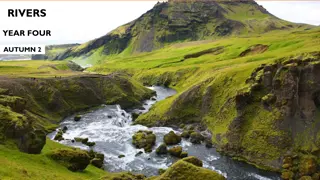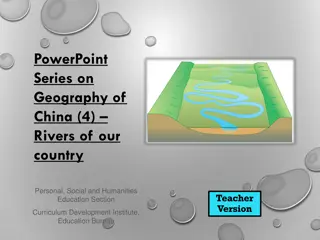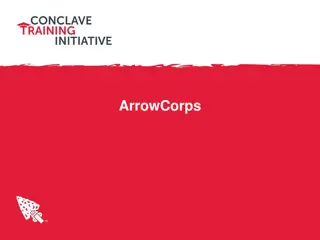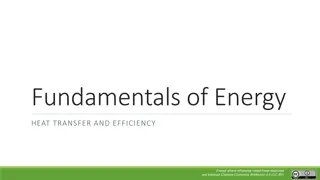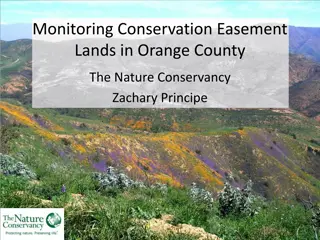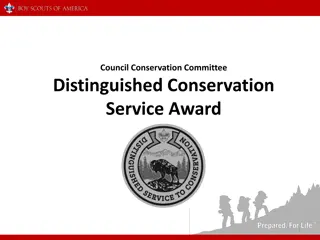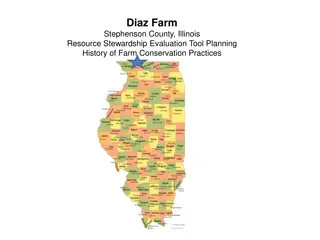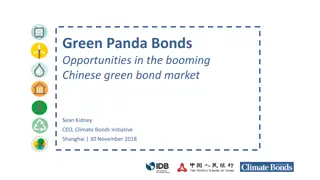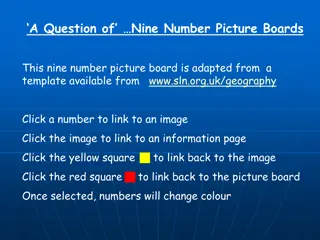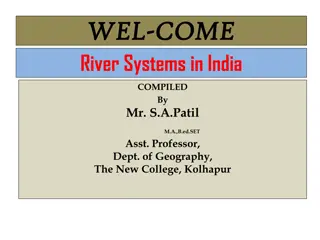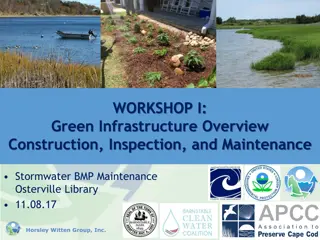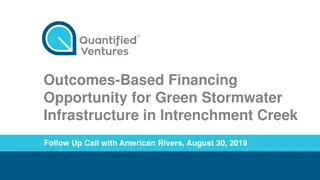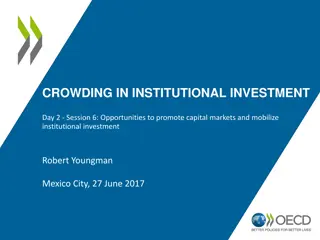Green Infrastructure Approach for Conservation of Tangipahoa and Tchefuncte Rivers
Using a green infrastructure approach, our organization is managing stormwater and nonpoint source pollution on the Tangipahoa and Tchefuncte Rivers in Southeast Louisiana. By conserving valuable natural areas and working with private landowners, we aim to create riparian buffers and enhance water quality. Our grant project involves utilizing native plants and open spaces to reduce stormwater management costs. We are committed to perpetuity in our conservation actions to benefit current and future generations.
Download Presentation

Please find below an Image/Link to download the presentation.
The content on the website is provided AS IS for your information and personal use only. It may not be sold, licensed, or shared on other websites without obtaining consent from the author. Download presentation by click this link. If you encounter any issues during the download, it is possible that the publisher has removed the file from their server.
E N D
Presentation Transcript
By using a Green Infrastructure Approach to Conservation --- we are helping manage storm water & nonpoint source pollution on the Tangipahoa and Tchefuncte Rivers Tangipahoa River, CFMS #698378 Tchefuncte River, CFMS #698379
Conserving and protecting valuable natural areas and agricultural lands of southeast Louisiana for current and future generations We work with private landowners and are committed to perpetuity (permanence of conservation actions that we take)
The goals of LTSL on the Tangipahoa and Tchefuncte: Introduce ourselves as a local land conservation organization interested in maintaining healthy communities and waterways our primary role is to utilize conservation options on private lands Make friends and develop working relationships and partnerships with landowners and community leaders in order to create and protect riparian buffers Obtain conservation servitudes along the waterways to create and protect riparian buffers in order to help manage stormwater and nonpoint source pollution and maintain scenic values along rivers
Run-off from storms flowing into streams causing Erosion Sedimentation Fecal Coliform Mercury
Our grant project activities were related to conservation action using a green infrastructure approach to enhance water quality = = native plants and open space reduce the costs of stormwater management and help control non-point source pollution
Along the Tchefuncte and Tangipahoa Rivers, we are working to create & expand riparian buffer zones using conservation servitudes and working with landowners to re- vegetate stream banks
Learned project requirements and gained a better understanding of the problem the sources & effects of contamination Investigated the concept of green infrastructure, specifically those conservation options that the Land Trust could naturally lead or facilitate, within the confines of our toolbox and expertise
For clarification -Our toolbox and expertise includes Conservation servitudes & fee-simple acquisition Restoration and enhancement of riparian buffers Blueway-Greenway mapping (paddle trails that connect people with green hubs (natural areas) Building relationships with private sector and bringing citizens to the table for discussion about water quality and conservation needs
Made contacts with private landowners Became a working part of the Watershed Task Forces on both Tangipahoa and Tchefuncte Introduced the concept of green infrastructure to parish planners & engineers as one affordable solution for stormwater mgt
Participated in local events such as Tchefuncte River Festival, Wetland Day and Earth Day, Kiwanis and Rotary meeting, native plant society meetings
Riparian Buffer Zones have the greatest potential to reduce the presence of nutrients (plants use them for food)and sediments (plant roots hold soil in place to control erosion. When possible, leaving nature in place is the most effective and efficient form of stormwater management Fecal coliform and mercury contamination are not easily addressed through private land conservation. The LPBF is the current, and most likely leader, to work with LDEQ to address those issues. Land Trust will facilitate and follow in this arena outside our expertise and mission
Along with completed tasks required by the grant funding, we are excited to announce the donation of an 80 acre conservation servitude Tangipahoa River near Independence we are excited to announce the donation of an 80 acre conservation servitude on the
Community Outreach: meet with private landowners to discuss conservation options and build relationships with parish and city planners, engineers and elected officials. Discuss importance of land conservation to healthy economy and environment Conservation Mapping & Planning: prioritize actions based on presence of critical/sensitive habitat, ecological functions such as stormwater management as well as scenic and agricultural values. 1. 2.
A Green Infrastructure Approach to conservation uses waterways & nature trails to connect natural areas (green hubs) to people, hence Blueways & Greenways Skulls Creek Restoration: facilitate, with technical partners and willing landowners, a discussion about a geomorphic study, stream restoration plan and implementation. Assure that stream restoration actions are protected in perpetuity. Use as a model project for other small, degraded streams in region. 3. 4.
5. Work with partners to assess, value and monitor the ecological functions of project- acquired conservation servitude on 80 acres near Independence
Along with completed tasks required by the grant funding, we are excited to announce the donation of a 30 acre conservation servitude of the Abita and Tchefuncte Rivers we are excited to announce the donation of a 30 acre conservation servitude at the confluence
Three Rivers Blueway: continue with established conversations (mayor, city planner and local paddling club and citizens to interpret, map and post a Blueway (paddling trail) in Covington, Three Rivers area. Purpose of the Blueway: to promote area tourism along with a campaign for cleaner water and scenic wildlife habitats Work with Flowers Estates Residents Association Conservation to fund, plan and implement a streamside restoration zone upstream from the residential area to reduce sedimentation for upstream . Land Trust to work to assure that restoration/enhancement activities are protected in perpetuity. 1. 2.
Flowers Bayou west of Hwy 21: work with conscientious developer who is interested in solving problems with adjacent failed development. Primary need: to re- vegetate and possibly reshape some of the steep slopes. More investigation is needed with technical partners to advise and lead. Land Trust s role should remain as facilitator and the conservation holder of servitudes to protect the restoration efforts long-term. Work with partners to consider assessing, valuing and monitoring the ecological functions of conservation servitude 3. 4.
For More Information, Contact: (985) 542-5006 Land Trust for Southeast Louisiana P.O. Box 1636 Hammond, LA 70404 www.ltsl.org For More Information, Contact: Prepared by Cynthia Ramseur, LTSL Advisor, Natural Capital Development, Ocean Springs, MS 228.282.5000 www.naturalcapitaldevelopment.com


